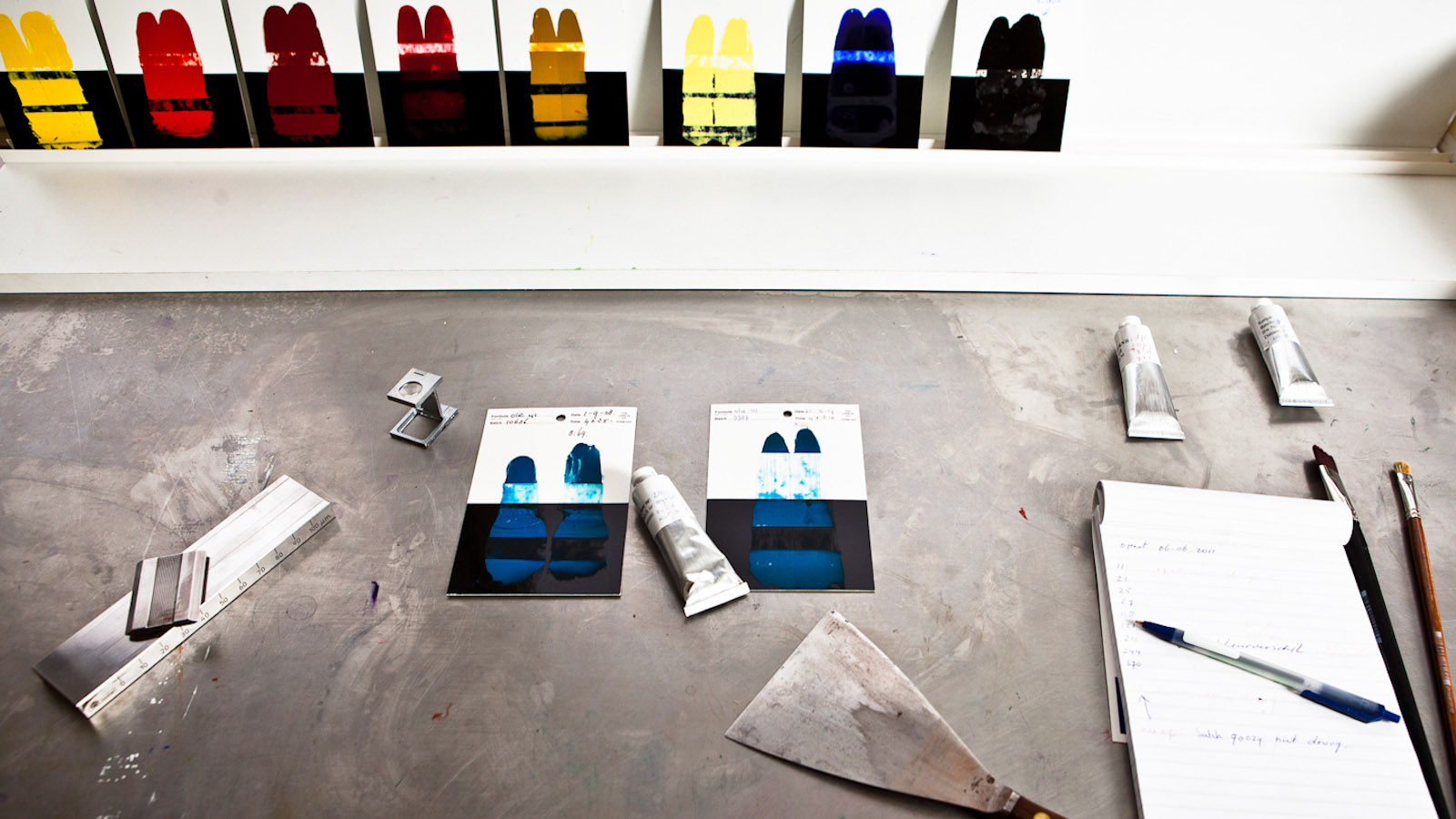The quality of paint is determined by several aspects, including the lightfastness, colour strength, opacity, the difference in gloss between wet and dry paint (colour shift), the degree of elasticity and flowability of the paint.
Colour Strength & Lightfastness
Our paint has a high colour strength because we produce it with maximum pigmentation. The pigments and pigment pastes in Ara come from the paint factory of Old Holland Classic Colours. All pigments have a lightfastness on the Blue Wool Scale of at least 7 in full tone and 6 when the tint is cured with titanium white. The Blue Wool Scale is the internationally accepted measure of lightfastness and runs from 1 to 8.
Opacity
Ara consists of a palette of opaque, non-opaque and semi-opaque colours.
Metallic and pearlescent effects
The metallic and pearl paints have two colour effects:
Regular colour effect: a portion of the light is absorbed, the rest is reflected. So when you see red, blue and yellow are absorbed.
Mirrored colour effect: the pigments that form the basis for these effects are:
- Metallic pigments: very small flat pieces of silver, bronze and gold reflect the light and provide a typical shine to the colour.
- Iridescent pigments: the pigment is applied on tiny mica platelets or a synthetic substitute. The light is reflected back and gives the colour a metallic shine.
- Interference pigments: a very thin titanium dioxide is applied on mica platelets. The light is now partially reflected by the surface of the mica, and partially by the surface of the titanium dioxide. The two different light beams are out of phase. They interfere to light with a different frequency, which creates a colour. This colour is strongest on a dark surface under a certain angle. Under a different angle the colour is complementary.
